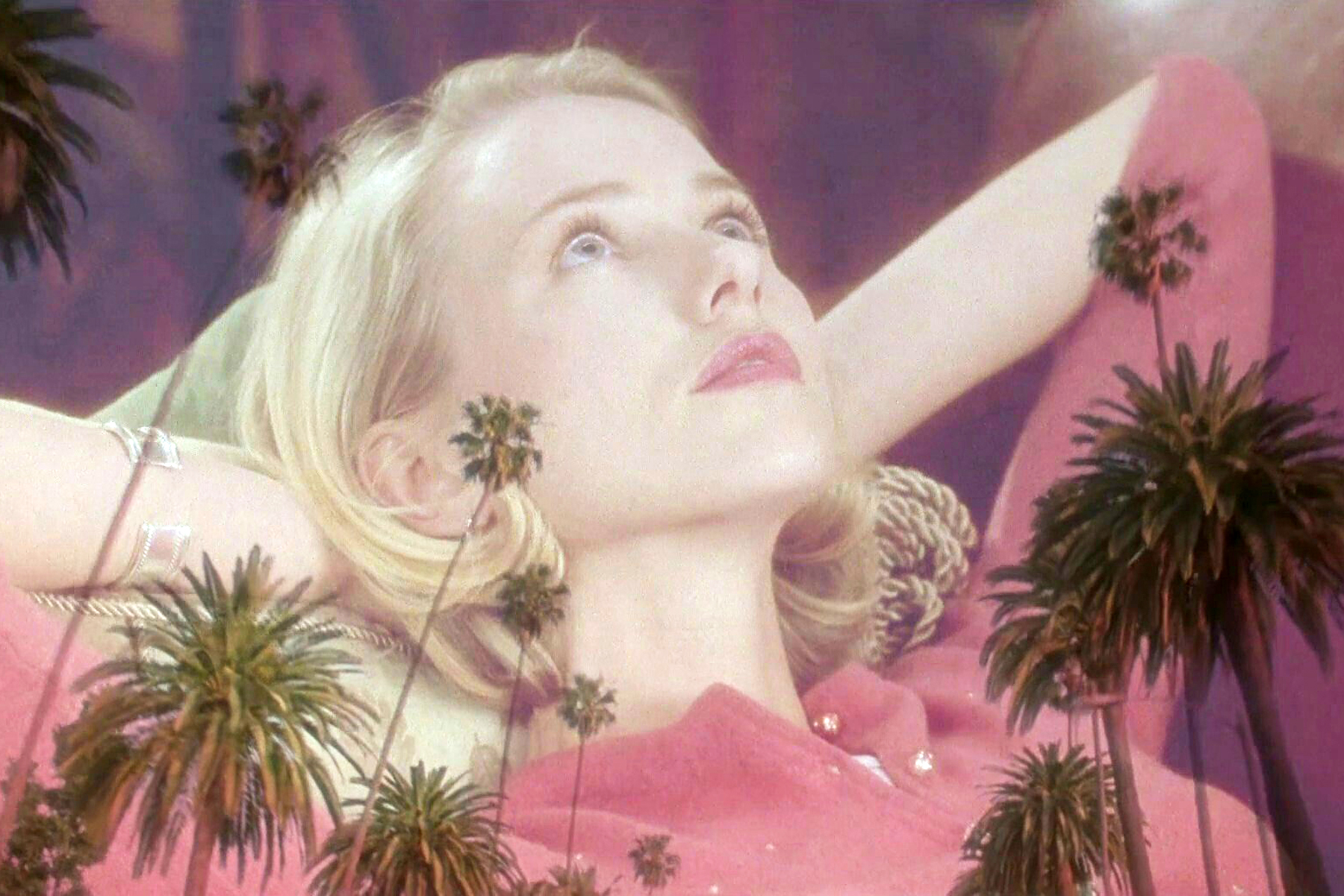Mulholland Drive (2001, Dir. David Lynch):
This review was originally published upon the film’s release in 2001.
I think people know what Mulholland Drive is to them, but they don’t trust it. They want to have someone else tell them. I love people analyzing it, but they don’t need me to help them out. That’s the beautiful thing, to figure things out as a detective. Telling them robs them of the joy of thinking it through and feeling it through and coming to a conclusion.
David Lynch
David Lynch loves sequences. Like a painter, he constructs tableaus, situations, free-floating moments. Watching a David Lynch movie involves a surrender to the power of nonsensical events like, oh, backwards-talking dancing midgets. Perhaps more than any modern director, Lynch plugs into the idea of cinema in its original undiluted form: a collection of images and sounds that evokes pure emotional response.
Mulholland Drive arrives at a propitious time. Audiences have grown accustomed to spoon-fed narratives, the certainty of A-to-B conclusions, spin-control moviemaking. Like a precise jolt of caffeine, Mulholland Drive aims for the head even as it assaults the nervous system. More than any of Lynch’s other works, the film maintains a consistent atmosphere of dread. The audience is invited, nay required to slip into this reverie. In the process, we get a “greatest hits” potpourri of every motif Lynch has pitched in the last two decades: the fixation on blood red and midnight blue; the rumbling ambient soundtrack (Angelo Badalamenti’s music is as unsettling and voluptuous as ever); the seamless intercourse between cherry-pie Americana and darker impulses; identity switches that gleefully run straight narrative off the rails; the implication that something nameless and supernatural is at work. And that’s not even mentioning the myriad references to Hitchcock, Bunuel, and Bergman.
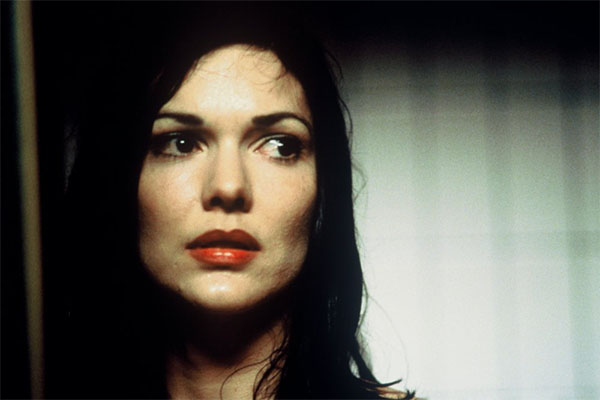
Some will charge that Lynch is merely recycling himself, has nothing new to say; they forget that Hitchcock, another director who had to endure scoffing critics in his day, outright remade The Man Who Knew Too Much and reconfigured The Thirty-Nine Steps at least twice in his career (Saboteur, North by Northwest). As any chef knows, it’s not the ingredients, it’s what you do with them, and Mulholland Drive‘s pleasurable trick is that like a silky femme fatale, it lures you under a security blanket of familiarity before ripping it (and the rug) away from us. All the genre elements are lovingly fitted into place: a backdrop of scheming Hollywood moguls and shadowy conspiracies; a car crash that jumpstarts the action; a slinky brunette amnesiac (Laura Elena Harring) who lifts her name “Rita” from a Gilda poster; a bemused young director (Justin Theroux) whose film is being shanghaied by those very same studio thugs; a mysterious black book with “the history of the world in phone numbers”; a blue key that may or may not open a blue box; and a blonde, perky ingenue named Betty (Naomi Watts) whose personality is cut straight from the cardboard corners of a ’50s cereal box. Everyone loves a good mystery, and for most of the film’s length, Lynch takes advantage of the audience’s curiosity, the primal desire to find the connections between these disparate threads.
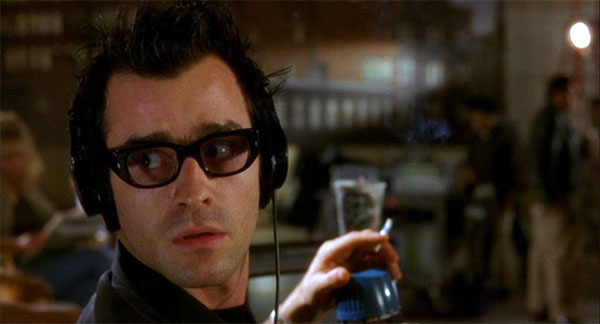
Cowboy: Well, just stop for a little second and think about it. Will ya do that for me?
Adam Kesher: [scoffing] Okay, I’m thinking.
Cowboy: No, you’re not thinkin’. You’re too busy being a smart aleck to be thinkin’.
For those who just dig answers, not to worry: the central question of Rita’s identity is solved, along with many, if not all, of the other conundrums. Twisty and withholding the narrative may be, but pay no heed to those who claim that there is no there there. Like the man behind the curtain, Lynch leaves enough signposts to render explanations possible, if by no means conclusive. But pity those who strain their utmost to string all the pieces together, because as a simple mystery story, Mulholland Drive is a failure. Characters make token appearances and disappear forever; plot threads trail into nothing.
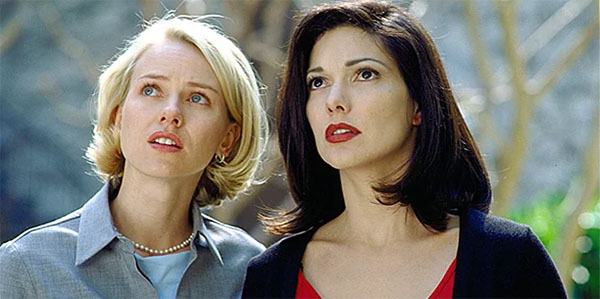
Actually, there is a real-world solution. Mulholland Drive was produced as a TV pilot that was rejected by ABC and then resurrected as a feature-length movie. It’s easy to pinpoint what was and is not the pilot—the camerawork gets all buggy and mobile, for one thing. Name actors like Robert Forster and Dan Hedaya show up for glowering cameos, then disappear completely. If the show was picked up, there’s no doubt that they (and some of the other subplots) would have reappeared, then been elaborated on. But, ah, there we go again—looking for explanations.
The reason we stick with the film is the sequences—and what a collection Lynch has fashioned this time around. Take, for example, a pivotal audition scene in which heretofore bubbly, Nancy-Drewish Betty (Watts gives hands-down the performance of the year) inexplicably and wonderfully knocks a lecherous co-star (and us) flat with a panting, sensuous take. Where does this virtuoso display of acting come from? How does this tie into the plot machinations? In the immortal words of the beer commercial, why ask why? Or to be more precise, the why is less important than how we respond.
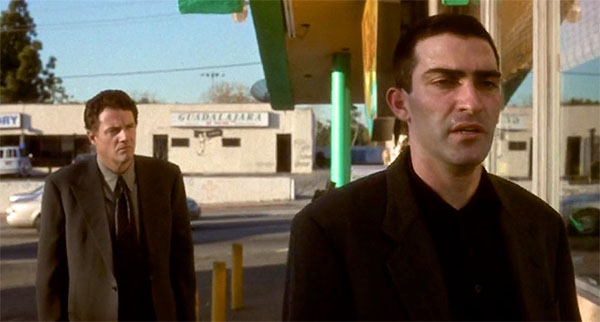
Similarly, why try to explain the blue box that sends Betty and her friend/lover Rita into an alternate reality (or is it?) in which Betty is a failed movie actress named Diane and Rita is her callous lover Camilla? Or the nameless creature behind a Denny’s-like diner, waiting to torment the man who saw him in his nightmare? Or the haunting midnight showdown between director Adam (Theroux) and an underworld figure known as “the Cowboy” (showstopping Monty Montgomery), who threatens the former’s livelihood in the politest down-home tones imaginable? Not to mention an assassination which goes awry when a hitman’s stray bullet hits the butt of an overweight woman next door? Or an after-hours night club in which singer Rebekah del Rio lip-synchs a heartrending Spanish version of Roy Orbison’s “Crying” before collapsing in mid-song? And oh yes, that’s Michael J. Anderson as the oversized dwarf in the wheelchair, natch.
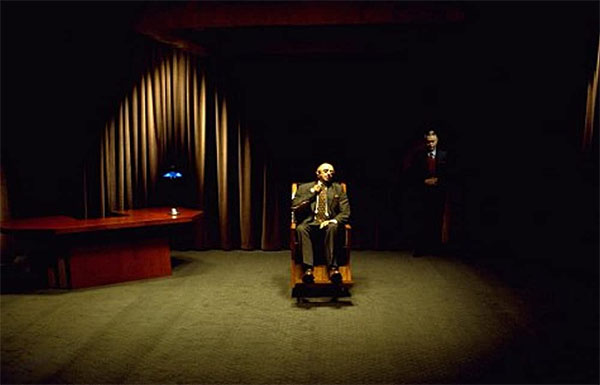
But even sifting through specific passages misses the point. Like Hitchcock, Lynch uses genre convention as his way at getting at unsettling emotional states, but while Hitchcock dallies in sexual perversity, Lynch sallies forth into dream-state hallucinations and more inchoate yearnings. The closest analogue in Hitch’s ouevre would be Vertigo, which also switches gears in mid-stream to devastating effect. Like that movie, Mulholland Drive expertly fashions a hypnotic alternate world in which every individual sequence adds to the aura of dread and portent, minus much of the overplayed “weirdness for weirdness’ sake” that mars some of Lynch’s other productions. The Hollywood milieu supports and focuses his style; the town’s dreamlike qualities are a perfect vehicle for his finicky obsessions, and like the rest of us, he’s seduced by old-school glamour. Even a stunning lesbian love scene is played in near-darkness, preferring to linger on breathless declarations of love rather than rote shots of tits and ass. Anchoring it all is Watts, her character deepening as she rises above the noise of the other subplots, then taking over the film entirely as she morphs into a raw bundle of frustration, jealousy, and crushing hopelessness. As in Sunset Boulevard, another classic with the name of a Los Angeles street as its title, Mulholland Drive presents its hero as the archetypal Hollywood victim-cum-dreamer.
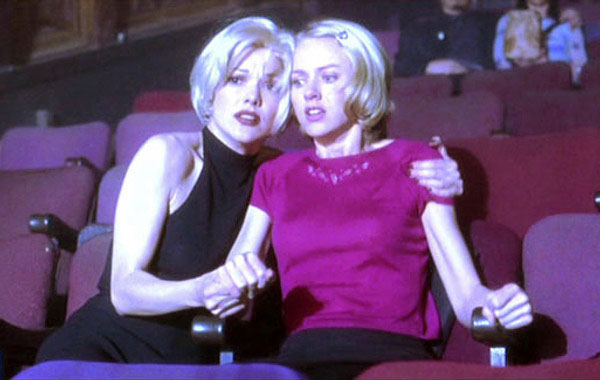
Like a particularly moving piece of classical music composition, Mulholland Drive‘s details matter less than the cumulative effect. As we follow Watts from day to night, from cereal box homilies to a scene where she masturbates alone, forlorn and damned, we remember why we love film noirs so much: they lead us by the hand from the mundane to open-ended, darker places. Too sincere to simply be a mind fuck, too twisted to pose as a “prestige” film, too operatic to masquerade as art-house cool, Mulholland Drive, for all its seeming impenetrability, is as crystal-clear as head (and heart) trips get. ■

